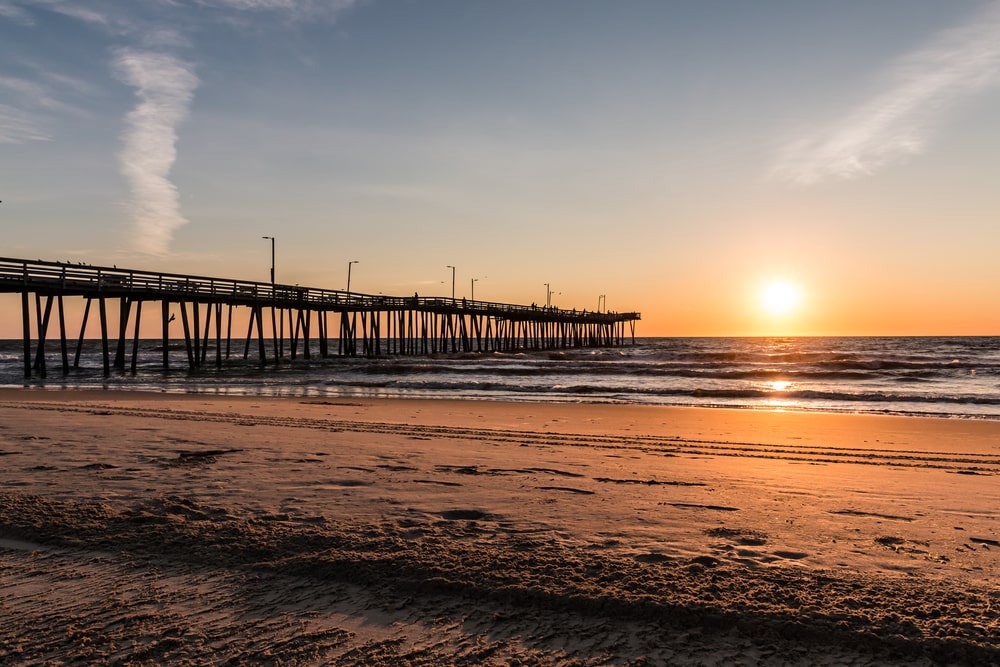Soak Up the Sun: Virginia Beach’s Climate and the Best Times to Visit
Nestled along the Atlantic coastline, Virginia Beach is a premier vacation destination that offers sun-drenched beaches, exciting attractions, and a lively atmosphere. But when should you plan your visit to make the most of your time in this coastal gem? In this blog post, we’ll delve into Virginia Beach’s climate and highlight the optimal times to visit, ensuring a memorable and enjoyable experience tailored to your preferences.

Climate Overview
Situated in southeastern Virginia, Virginia Beach is graced with a humid subtropical climate that features mild winters, balmy summers, and a moderate amount of precipitation year-round. With approximately 213 days of sunshine annually, the city’s welcoming climate makes it a sought-after destination for beach enthusiasts and outdoor adventurers.
Summer (June to August)
Summer in Virginia Beach brings warm temperatures, with average highs fluctuating between the low to high 80s (Fahrenheit). While humidity can be a factor during this season, the refreshing ocean breeze helps to keep the heat comfortable. Summer is the peak tourist season, attracting visitors who are eager to bask in the sun, enjoy the sandy shores, and take part in various water activities. A host of events and festivals, such as the Neptune Festival, the Patriotic Festival, and the East Coast Surfing Championships, also take place during these months. However, be prepared for larger crowds and higher accommodation prices during this popular travel period.
Fall (September to November)
Fall is an excellent time to visit, as the weather remains warm and pleasant, with average high temperatures ranging from the high 70s to low 60s (Fahrenheit). As the summer crowds disperse, visitors can enjoy more relaxed beaches, lower accommodation rates, and shorter lines at popular attractions. Fall also brings vibrant foliage to the area, offering a beautiful backdrop for outdoor activities. Virginia Beach hosts several events during the fall months, including the Neptune Festival’s International Sand Sculpting Championship and the Craft Beer Festival.
Winter (December to February)
Winter in Virginia Beach is characterized by cooler temperatures, with average highs in the upper 40s to low 50s (Fahrenheit). While the winter months are not ideal for beach activities, they offer a unique opportunity to experience the area without the crowds. Accommodation rates are generally lower, and visitors can still enjoy the area’s indoor attractions, such as the Virginia Aquarium & Marine Science Center and the Military Aviation Museum. Additionally, the holiday season brings festive events and decorations to the city, creating a cozy and charming atmosphere.
Spring (March to May)
Spring is another great time to visit Virginia Beach, as the weather begins to warm up, with average high temperatures ranging from the low 60s to mid-70s (Fahrenheit). The spring months offer visitors the chance to enjoy outdoor activities, such as hiking, biking, and exploring the area’s parks and nature reserves, without the summer heat and humidity. Spring also hosts several events, including the Virginia International PAN Fest and the Pungo Strawberry Festival.
Virginia Beach’s climate offers something for everyone, with each season bringing unique experiences and attractions. While the summer months are the most popular time to visit, the spring and fall seasons provide a more relaxed atmosphere, warm temperatures, and lower accommodation rates. Ultimately, the best time to visit depends on your preferences and priorities, whether it’s soaking up the sun on the beach, exploring the area’s rich history, or enjoying the city’s diverse culinary scene.
Interested in an attraction you can see all year around? Check this out! And If you are looking for a professional pressure washing company that gives reliable results, then checkout Ecotek Power Wash!

